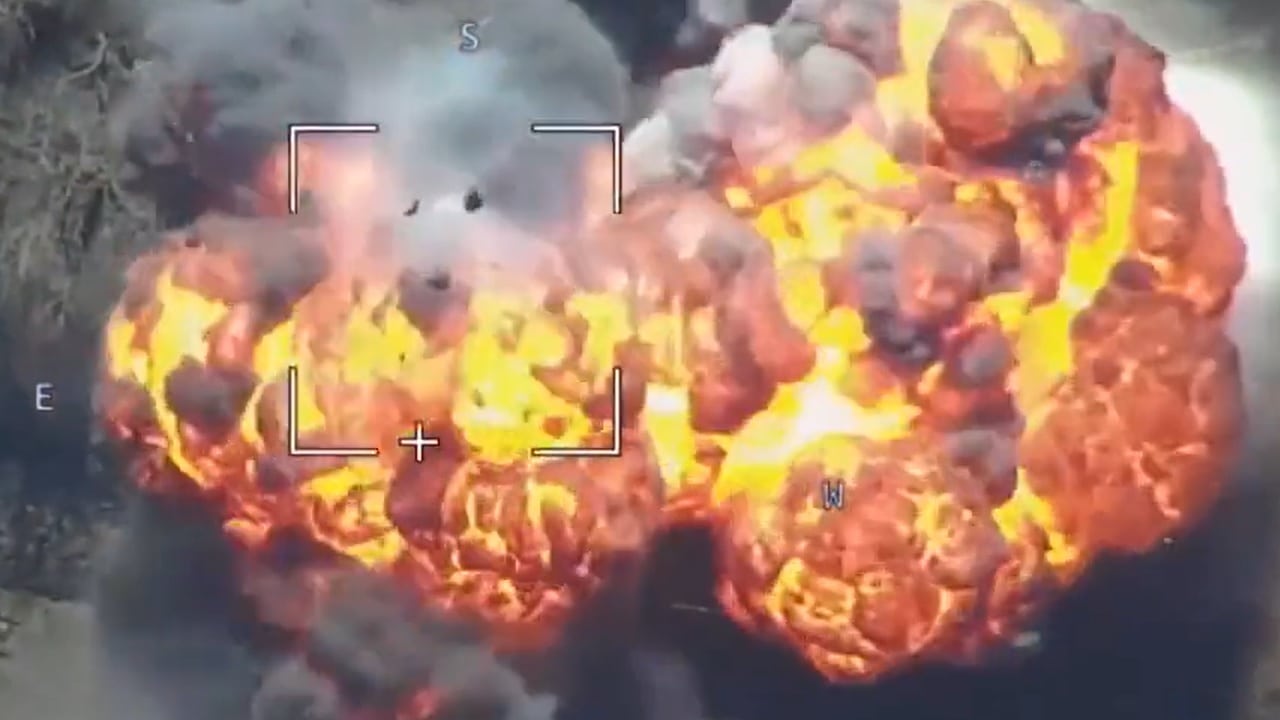A video shared by Ukraine Weapons Tracker (@UAWeapons) on Thursday purported to show numerous Russian drone attacks on Ukrainian Army vehicles in the past week.
The location of the attacks and when these occurred isn’t known, but in the 32-second-long clip, a ZALA Lancet loitering munition was employed to destroy a 2S1 Gvozdika 122mm self-propelled howitzer (SPH), while another 5P85D/S launcher from an S-300PS surface-to-air missile and a Krab 155mm SPH were also targeted by the small kamikaze drones.
The video, which was highly edited and shot from multiple angles, was originally posted to the Telegram social media channel by @BTR80 – a known Russian propagandist.
The attacks involving the Lancet, an unmanned aerial vehicle (UAV), and loitering munition developed by the ZALA Aero Group (part of the Kalashnikov Concern), have not been independently verified.
Though, indeed, both sides are increasingly employing social media channels including Twitter, Instagram, YouTube, and Telegram to share footage filmed from the battlefield often times just hours or even minutes after an action occurred, clips that are so highly edited that the authenticity should be questioned.
This particular video is noteworthy for capturing multiple attacks – at times the ground appears to be mud-soaked while in another it is covered in snow.
This is clearly a “sizzle reel” that is meant to highlight a number of drone attacks involving the Lancet, but as noted by Ukraine Weapons Tracker, the “aftermath is not completely conclusive” in all of the strikes.
Moreover, some commentators have noted the lack of support vehicles for the S-300 – a Soviet-era air-defense system that is now employed by both sides – and the fact that it appears to be “floating” or “fluttering” suggests it may have been one of the many inflatable decoys now employed by the Ukrainian military.
Kyiv’s forces have deployed decoys of main battle tanks, rocket launchers, and other “high-value targets.”
Russia’s Successful Drone Efforts
It does appear in the newly posted video that the other vehicles were destroyed, and according to Oryx, the Dutch open-source military intelligence (OSINT) website that has been tracking combat losses in the ongoing fighting, the Lancet loitering munitions have scored more than 100 successful hits on Ukrainian targets during the past thirteen months.
Most of the targets were towed artillery and self-propelled guns. The OSINT group has reported that the Kremlin has been increasingly employing loitering munitions as its fleet of attack helicopters has suffered extensive losses.
#Ukraine: A Ukrainian 2S1 Gvozdika 122mm self-propelled howitzer was destroyed by a Russian Lancet loitering munition.
Another 2S1, a 5P85D/S launcher from a S-300PS surface-to-air missile system and a Krab 155mm SPH were also hit- but the aftermath is not completely conclusive. pic.twitter.com/HXzRXOIpc1— ???????? Ukraine Weapons Tracker (@UAWeapons) March 30, 2023
Russian propagandists have also uploaded footage of the drone kills, sometimes re-editing old clips to bolster the number of “successful strikes.” In this case, it is unclear when these attacks occurred.
However, as has been long noted, the truth is the first casualty of war – and we all know, Russia has been anything but truthful in this conflict, which is increasingly the “first social media war.”
Author Experience and Expertise:
A Senior Editor for 19FortyFive, Peter Suciu is a Michigan-based writer. He has contributed to more than four dozen magazines, newspapers, and websites with over 3,200 published pieces over a twenty-year career in journalism. He regularly writes about military hardware, firearms history, cybersecurity, politics, and international affairs. Peter is also a Contributing Writer for Forbes and Clearance Jobs. You can follow him on Twitter: @PeterSuciu.

